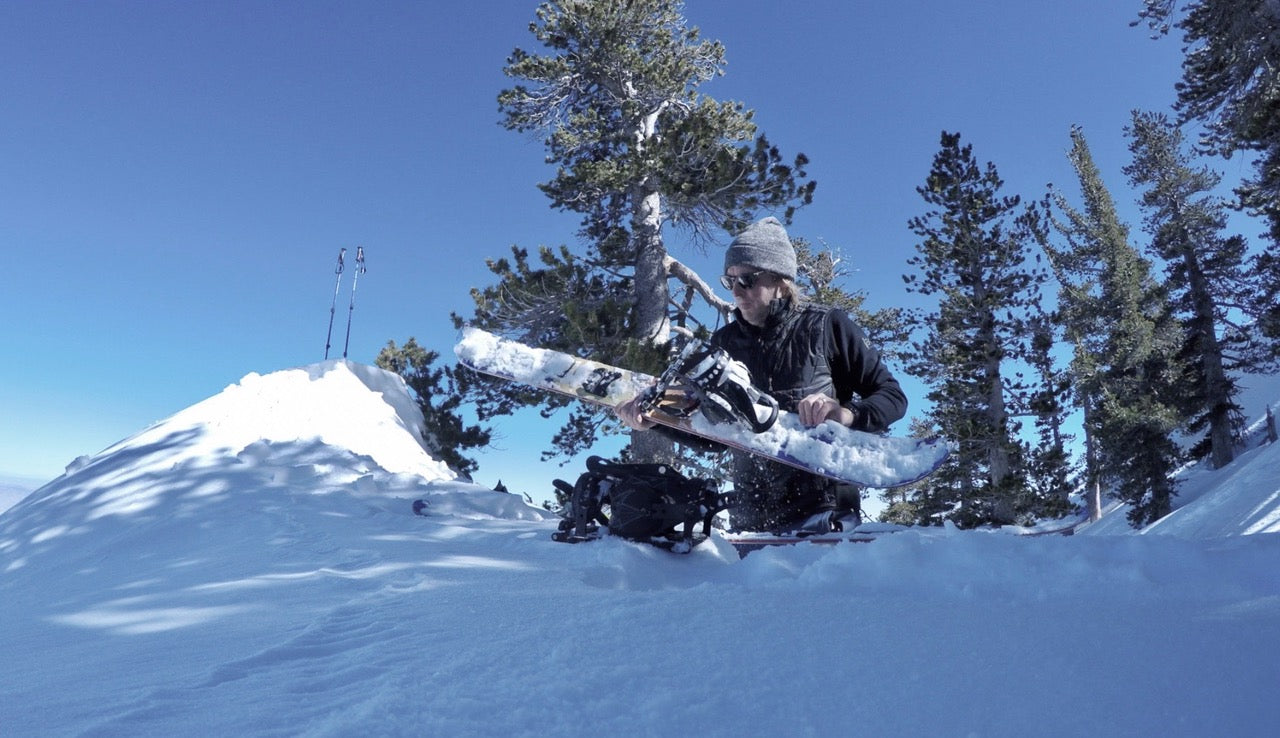
Springtime is one of our favorite times to snowboard and head into the backcountry. The days are longer, and the snowpack in most mountain ranges has started to change in a beneficial way. Objectives and zones that might have been too difficult or unpredictable mid winter, are now prime to be ridden. Epic missions with friends, ripping turns in soft corn snow, under bright blue skies make for some of the best days if the season.
There is a fine balance between overpacking for a backcountry mission (which leads to an unnecessarily heavy pack), and under packing (which can get you into trouble.) The best way to figure out what works for you is packing and re packing your kit, rationalizing why/ how you would ever use each item you’d bring with you. We’ve decided to simplify the gear explosion for you with our list of go to items when splitboarding.

Before heading out, always check your local avalanche guide for snowpack conditions, and be sure to get certified yourself. The more you know, the safer you’ll be in the backcountry.
- Avalanche Kit: Beacon, probe, shovel, sometimes even an airbag. These items aren’t ‘maybe’ items but MUST haves. A beacon, probe and shovel are all key to avalanche safety in the backcountry, not just for you, but for the people you are with as well. If you have an airbag, definitely always use it.
- Poles
- Gloves: One thin, one heavy (we prefer one good set with removable liners- best of both worlds!)
- Eye Protection: Goggles, Sunglasses
- 1L Water (or a way to get water in the backcountry such as a LifeStraw), Pro Bars/ Shot Blocks
- Sunscreen/ Lip Balm and some stuff for minor cuts/ blisters
- Packable Baseball Hat, Beanie
- Helmet
- Headlamp
- Whistle
- Voile Straps, Spark Split Tool, Extra buckle and toe strap
- Correct Approach Gear for Objective: Crampons, Approach Shoes, Snowshoes
- Spare batteries (for beacon/ head lamp / radio)
- Appropriate layers for the mission: Extra beanie. Lightweight down or insulation layer, wearing the exact right merino wool layers in the right weight, UPF sun shirt.
- Paper Map, Guidebook, or a physical copy of the zone is always a great idea. Can’t tell you how many times my phone has died on a backcountry trip.
- Comms (radio) if in a group of 2 or more, Compass. Working phones are good, but they affect the way beacons transmit communications and the best mode for a phone to be in is OFF when touring.
Pro Tip: Leave a note at your car for where you plan to be, just in case. Let a friend who isn’t touring with you know where you guys are headed as well and what time you are planning to return.
Figuring out what tools work best for you and who in your crew will carry what is ideal to safely and successfully navigating the backcountry. Safety is key, but most importantly, have fun out there!

